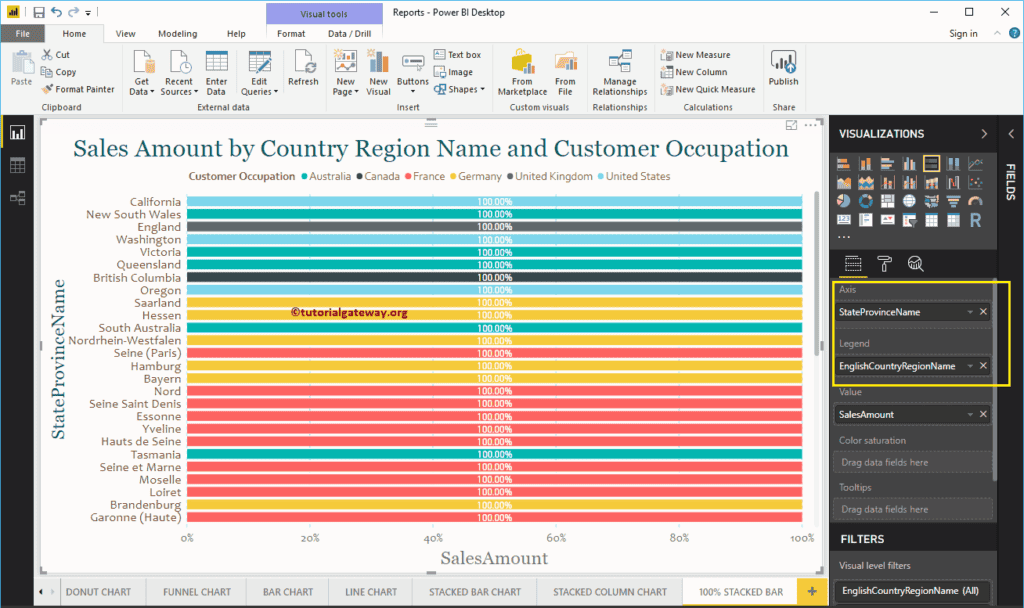The Power BI 100% Stacked Bar Chart displays the metric information in percentages. Let me show you how to create a 100% Stacked Bar Chart with an example.
For this Power BI 100% Stacked Bar Chart demonstration, we are going to use the SQL Data Source that we created in our previous article. So, Please refer to the Connect to SQL Server and Charts article to understand the Power BI Data Source.
How to Create a 100% Stacked Bar Chart in Power BI
To create a Power BI 100% Stacked Bar Chart, drag and Drop the Sales Amount from the Fields section to the Canvas region. It automatically creates a Column Chart, as we have shown below.
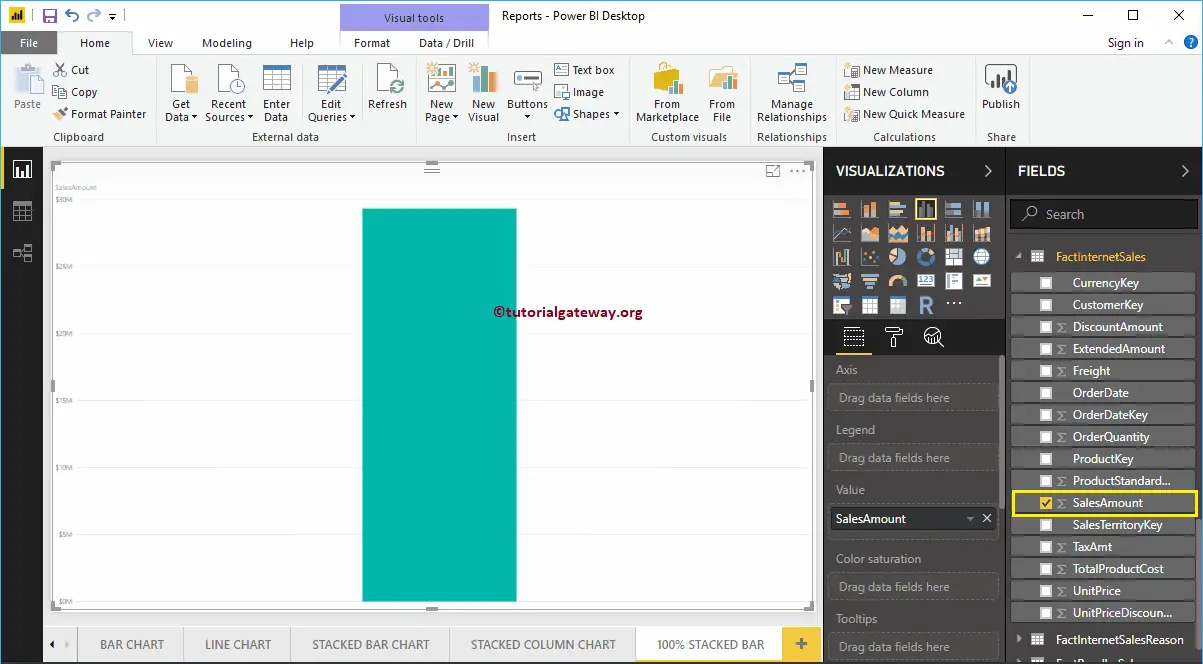
By clicking the Chart under the Visualization section, automatically convert the Column Chart into a 100% Stacked Bar Chart.
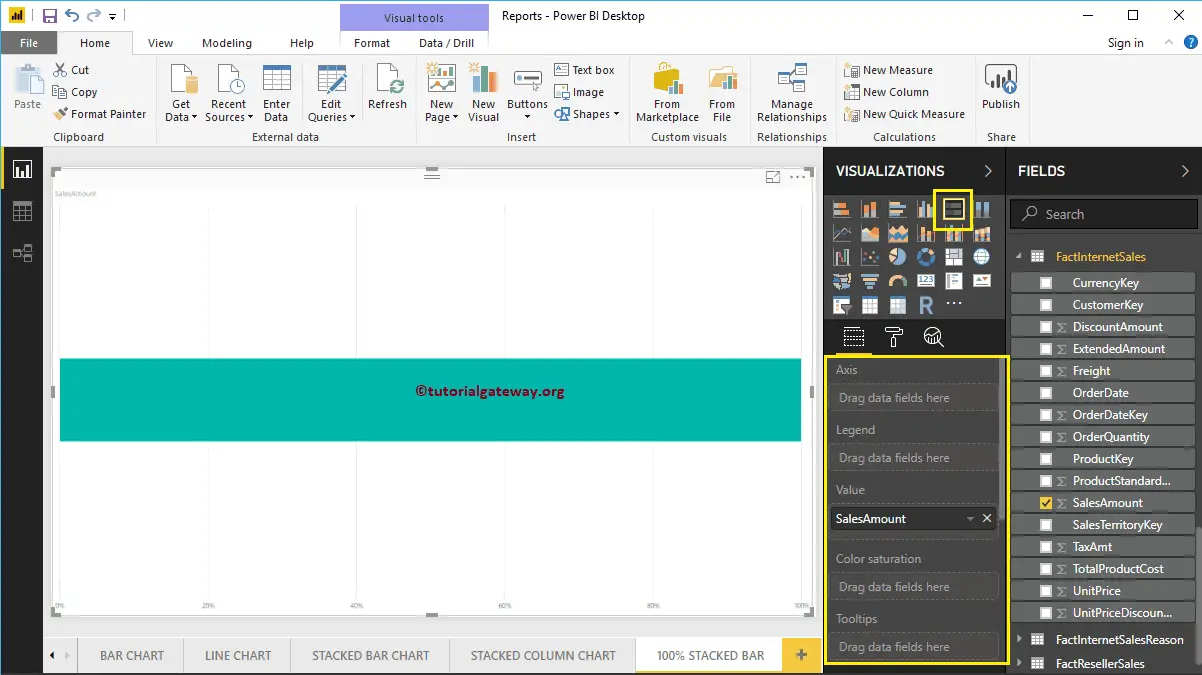
Next, let me add the English Country Region Name to the Axis section to create a 100% Bar chart. This Chart shows the Sales Amount (in percentage) by English Country Region Name.
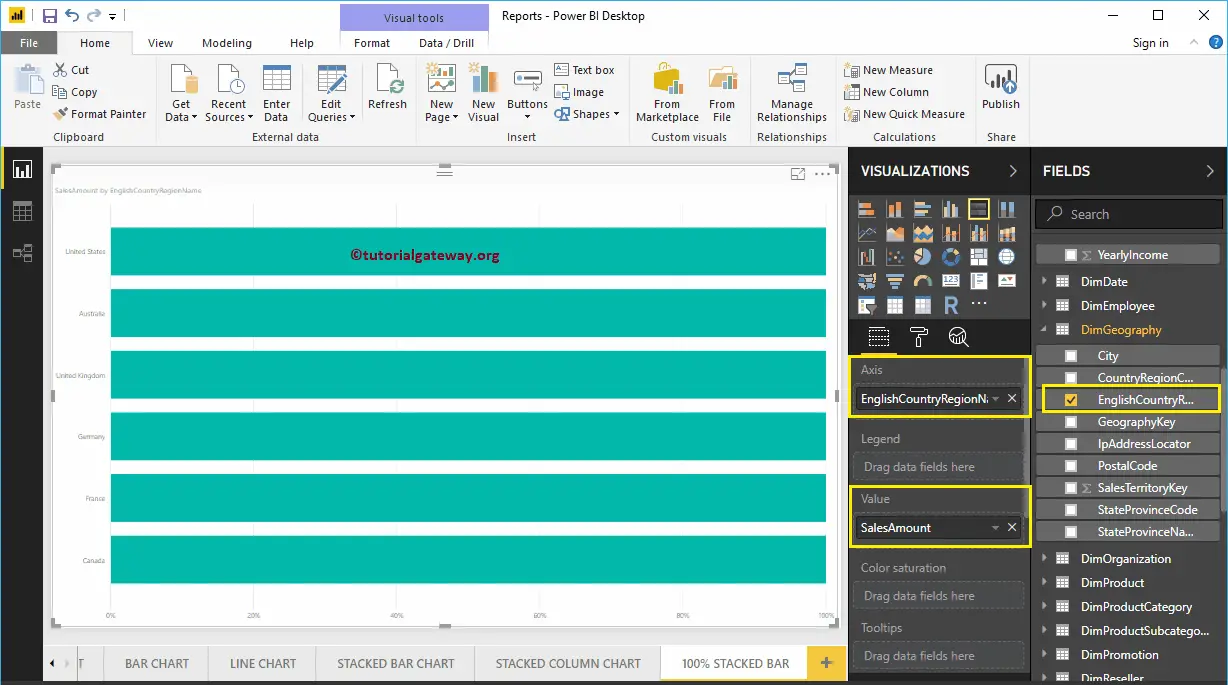
Next, we add Occupation to the Legend section to convert it into the 100% Stacked Bar Chart.
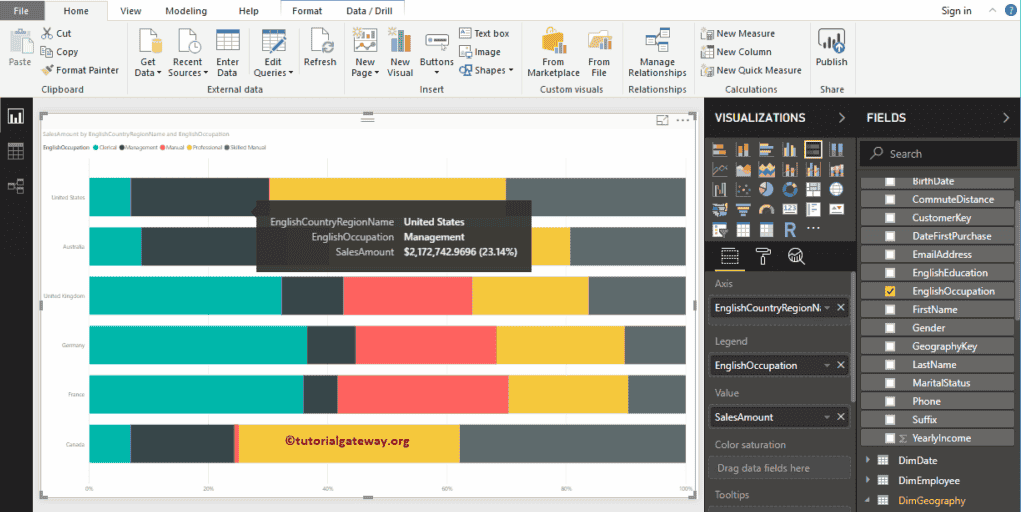
Hover over any bar portion to show you the Tool-tip of the Country Name, Customer Occupation, and Sales Amount.
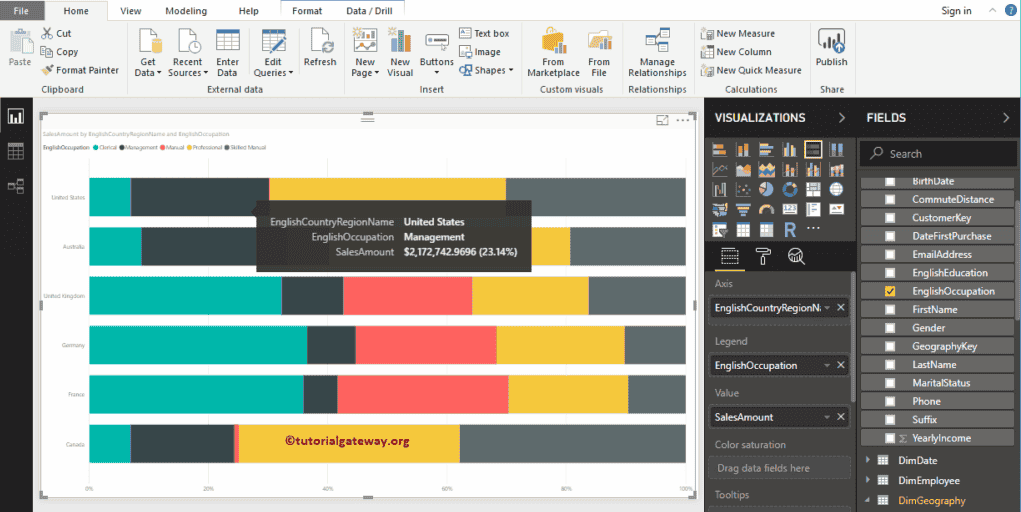
Create a 100% Stacked Bar Chart in Power BI Approach 2
First, click on the 100% Stacked Bar Chart under the Visualization section. It automatically creates a 100% Stacked Bar Chart with dummy data, as shown in the screenshot below.
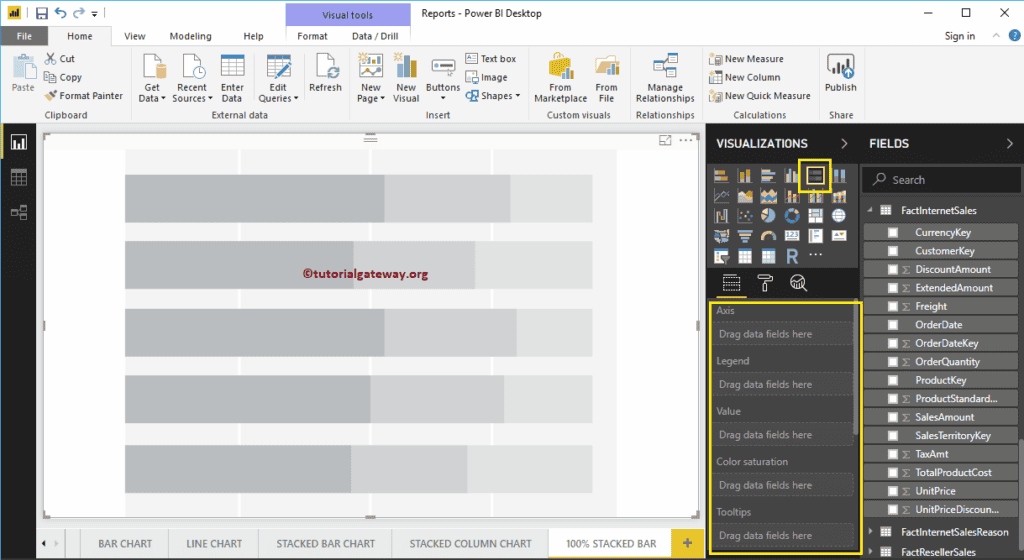
To add data to the 100% Stacked Bar Chart, we have to add the required fields:
- Axis: Please specify the Column that represents the Horizontal Bars.
- Legend: Specify the Column to divide the Horizontal Bars.
- Values: Any Metric value such as sales amount, Total Sales, etc.
Let me drag the Sales Amount from the Fields section to the Values field and the English Country Region Name field to the Axis Section.
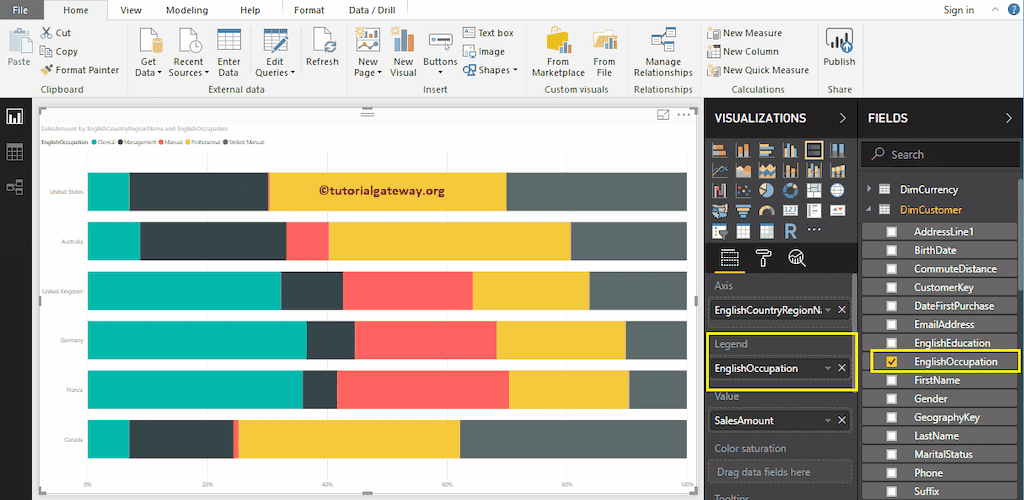
Next, add the English Occupation from the DimCustomer table to the Legend section. You can do this by dragging Occupation to the Legend section or simply checkmark the English Occupation column.
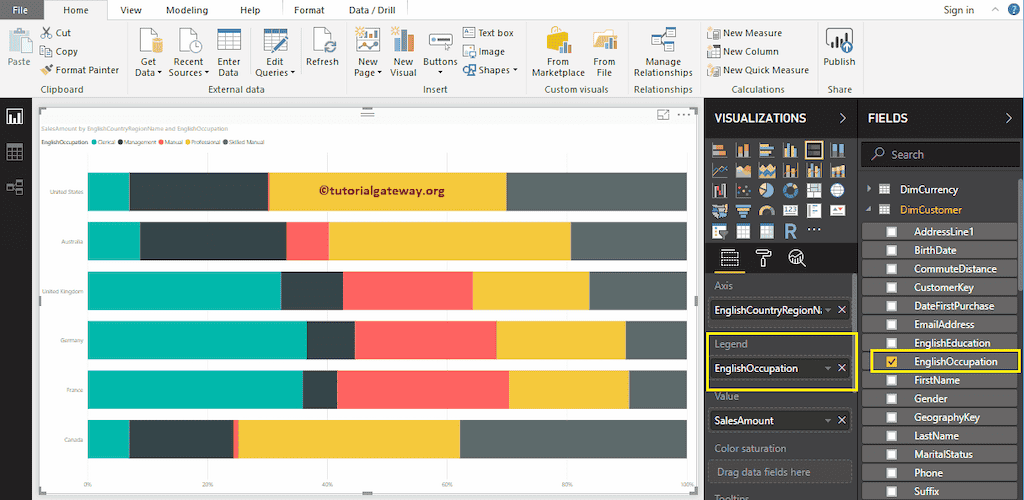
Data Labels display information about each group of a horizontal bar (country). In this case, it displays the Sales Amount (in percentage) of each occupation. Let me Enable the Data Labels so you can see each group’s percentage.
Please go to the Format tab to enable data labels and toggle the Data labels option to On. Let me change the Color to White, the Font family to DIN, and the Text Size to 18
Now you can see a 100% Stacked Bar Chart with Percentage values
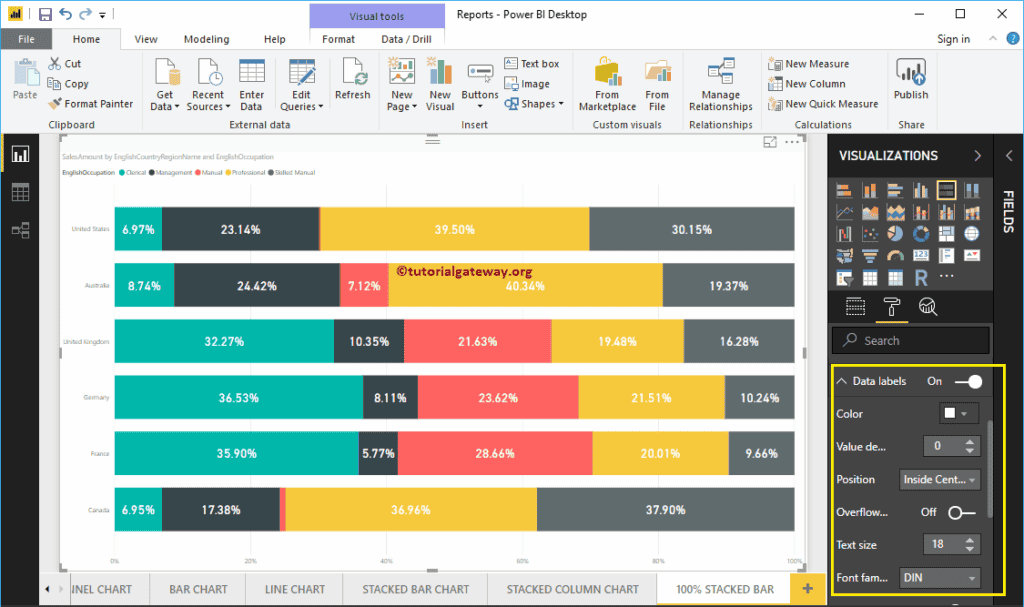
Let me do some quick formatting to this Power BI 100% Stacked Bar Chart
NOTE: Formatting options for both Stacked Bar Chart and 100% Stacked bar Chart are the same. So, I suggest you refer to the Format Stacked Bar Chart article to understand the steps involved in formatting the 100% Stacked Bar Colors.
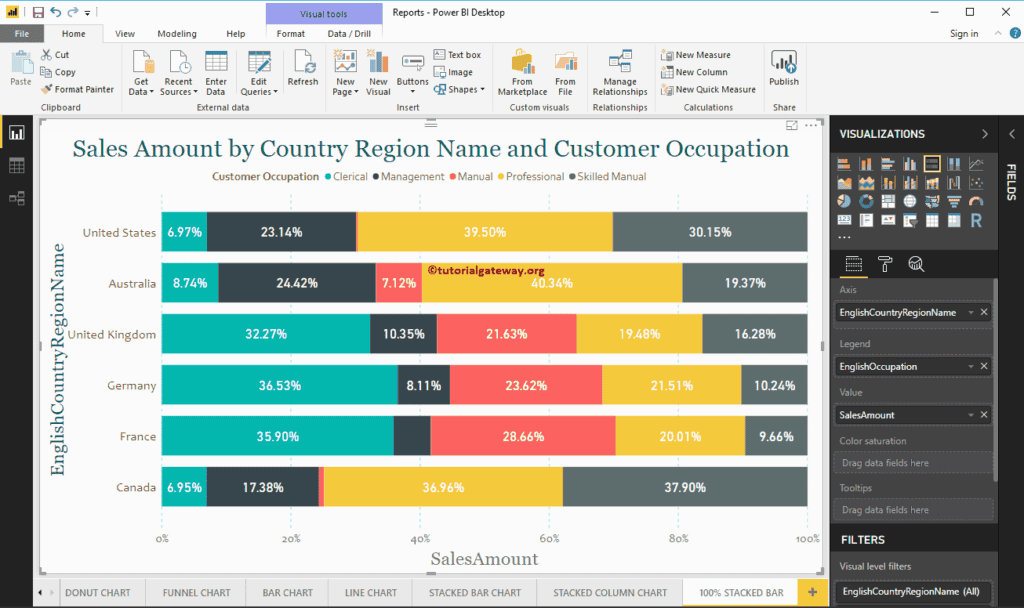
This time, we added the State Province Name to the Axis and the Country to the Legend for a 100% stacked bar chart. From the screenshot below, the Country Name is acting as the Bar Color. You can’t group the Country Names inside a State ( State Name Inherited from Country).
